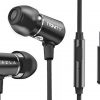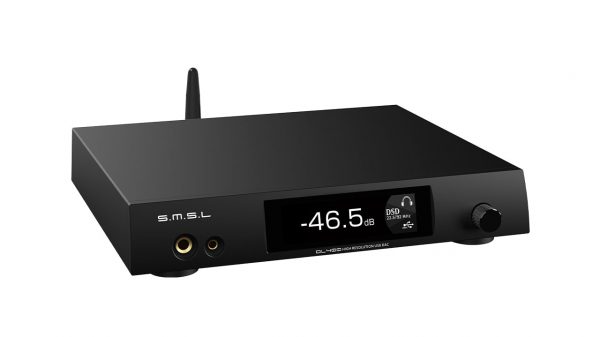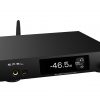When you consider that Best Buy stopped selling physical media in 2024 and Target is about to pull the plug on DVDs and Blu-ray in 2025, Sony’s announcement over the weekend about the future of recordable Blu-ray discs is not really that surprising. Walmart and Amazon will be your best options going forward for those who are still committed to the physical format when it comes to movies.
In what seemed a fairly sudden move, Sony has announced that as of February 2025, it will no longer be manufacturing or distributing recordable Blu-ray Discs, MiniDiscs, MD Data discs, and MiniDV cassettes.
But after reaching out to Sony, it has become apparent that the hysteria might be rather misplaced. The keyword in that announcement was “recordable.”
Here is the announcement from Sony translated from Japanese:
“Thank you for your continued patronage of Sony products. We will end production of all models of Blu-ray Disc media, MiniDiscs for recording, MD data for recording, and MiniDV cassettes as of February 2025. There will be no successor models. We would like to express our sincere gratitude to our many customers for their patronage to date.“

As a result of Sony’s initial announcement, the internet has been abuzz with conclusions that the Blu-ray Disc format is ending. However, there is more to the story as a follow-up statement issued by Sony provides some additional clarification: “In Japan, we have a unique culture of recording TV programs in the Blu-ray disc and we sell blank storage Blu-ray discs for this use only in Japan. The subject of this notification is these discs.”
What This Really Means
Reading both the initial announcement and follow-up clarification from Sony, this is not as dire as it seems. What Sony is referencing is that in Japan (and possibly other select markets), after the Blu-ray Disc format was established in 2006, Sony and other select brands also introduced Blu-ray Disc recorders for the purpose of recording TV shows and other related content for personal preservation of high-definition content on physical media. BD-R was also briefly popular as a data archiving format but as HDD and SSD drive capacities have increased and prices have plummeted, BD-R lost its appeal for data storage.

Due to restrictions imposed by movie studios and other content providers for the North American market, consumer Blu-ray Disc recorders were not made available for public use. The studios and its accountants didn’t want consumers to have the ability to make perfect digital copies of copyrighted content that could end up being sold on an unauthorized basis. As a result, unlike Japan, the only available Blu-ray Disc recording options for North America were via professional recording units that did not provide built-in HDTV tuners or HDMI inputs or via PC Blu-ray Disc writers.

What this means is that Sony’s announcement has a very limited impact on those in the North American market, but there may still be far-reaching implications regarding the state of physical media for video playback.
Looking Back
Believe it or not, Blu-ray has been with us for eighteen years. Debuting in 2006, Blu-ray was intended to replace DVD as it offers playback of Full HD video, whereas DVD is a standard definition format that only supports up to 480i/p Standard Definition resolution.
Even with the increased presence of streaming, physical media (Blu-ray, DVD, Vinyl Records, CDs, etc…) remained more popular in Japan than in many other markets. However, that trend is now subsiding, and with reduced demand for physical media home recording, Sony has made the decision to end recordable disc products.
Sony isn’t the only maker of recordable Blu-ray discs, but since they are the dominant player, others still in that business will probably take notice – there may be a slight initial surge in demand as affected consumers “stock up” – but after the dust settles, recordable Blu-ray discs will likely disappear not only in the Japanese market but worldwide.
Panasonic and Verbatim will be your main options going forward.

So How Do Recordable Discs Relate to Pre-Recorded Blu-ray Movies?
So this is the $64,000 Question. The answer? They don’t. Pre-recorded Blu-ray Discs are stamped or manufactured at high speed directly onto blanks using specialized disc stampers. They don’t use recordable Blu-ray Discs in the manufacturing process. So they’re not directly affected by Sony’s announcement.
The top Blu-ray pressing plants like Sonopress in Germany, Sony DADC in Austria, and Vantiva (formerly Technicolor) in Mexico press millions of prerecorded Blu-ray Discs a year. There are some independent Blu-Ray Disc manufacturing services like DiscMakers which can create small batches of Blu-ray Discs for consumers using 25GB recordable Blu-ray Discs, but this is not the same process used by the industrial Blu-ray pressing plants. So Sony’s announcement should not cause fans of physical media undue concern.
While demand for new titles on DVD, Blu-ray Disc and UHD Blu-ray fell by almost 25% in 2024, there were some high points. Denis Villeneuve’s “Dune 2” sold over 132,000 copies worldwide on Blu-ray and UHD Blu-ray Disc. And specialty labels like the Criterion Collection continue to support physical media with their excellent high quality restorations of classic films onto 4K UHD Blu-ray Disc. But blockbuster movies and the efforts of specialty labels are unlikely to be able to sustain physical media indefinitely.
So it might be time to start stocking up on your favorite films and TV shows on Blu-ray or UHD Blu-ray Disc before they become available online only on streaming services or as a digital purchase or rental, or as a digital download on a platform such as Kaleidescape.
Current State of the Blu-ray Disc Player Market
Currently, there are two Blu-ray Disc formats in use, Blu-ray (aka Full HD Blu-ray) and Ultra HD Blu-ray (aka 4K Blu-ray). However, there are only a few companies left making players with Sony and Panasonic being the two major companies still offering both standard Blu-ray and UHD Blu-ray Disc players.
Lesser known brands Reavon and Magnetar continue to release new models and R_volution provides Disc playback – and even disc ripping – on some of its 4K and 8K Media Players. Audio/videophiles were sad to see venerable OPPO Digital stop making their universal disc players players in 2018 (although they still provide limited support for their existing products). But consumers who wish to purchase new players still have a few options. However, should Amazon and Walmart pull the plug on Blu-ray movies, there will be little incentive for hardware manufacturers to offer new models.
Key Points in the Blu-ray Timeline
- 2024: Redbox is Done and the Fat Lady is About to Sing for Physical Media
- 2023: Disney Ends DVD and Blu-ray Releases Down Under
- 2018: OPPO Throws In The Towel
- 2011: Star Wars: The Complete Saga on Blu-ray Breaks Sales Records
- 2009: 3D Blu-ray Discs in the Works
- 2009: Blu-ray Disc Product Licensing Program Announced
- 2009: TAD Demonstrates Music-only Blu-ray Disc Format
- 2008: Blu-ray Recorder Sales Hit Record Levels (in Japan)
- 2008: Blu-ray Triumphs, HD-DVD R.I.P.
- 2006: Blu-ray Disc Ushers in New Era of Entertainment
- 2006: Blu-ray Disc Format Specifications Completed
The Bottom Line
While the BD-R announcement isn’t really newsworthy for those who are not using the recording function of Blu-ray Disc, it is one more nail in the coffin for movies on physical media. Even so, it’s by no means an impending sign of the death of physical media as a whole. Vinyl sales continue to remain strong and even CD sales are still showing some signs of life. And sales of blockbuster titles like “Dune 2” show there is still some life left in Blu-ray Disc.
Blu-ray is not going away just yet as pre-recorded Blu-ray Disc movies and content distributed by movie studios and independent creators are not directly affected by Sony’s announcement. But let’s face it, as streaming continues to dominate, the writing is on the wall, at least for video media. The end of Blu-ray Disc isn’t imminent, but neither is its long-term future guaranteed. This is a continuing story, and eCoustics will continue to cover it.
Check out more of our coverage of Blu-ray.




































Aaron Riley
January 29, 2025 at 1:14 pm
Anyone could Blu-Ray recorders in America. They were standard on every computer. Most people got 5 DVD’s at a time from Netflix, ripped them into DVR and sent the, right back. There were a couple extensions that made it possible.
Chris Boylan
January 30, 2025 at 4:11 pm
Blu-ray Disc (BD ROM) drives were never “standard on every computer.” For a period, you could order BD-ROM drives for some desktop and laptop computers as an extra cost option, but they weren’t cheap. DVD drives were common on laptops and desktop computers for a time, but DVD drives are not the same thing as BD-ROM drives.
I own an external USB Samsung BD-ROM drive which I bought around 10 years ago. I used it fewer than 5 times. I bought a spindle of 25 blank BD-R discs and still have 23 of those left.
As a data archiving format, BD-ROM drives made sense for a very brief period. They can hold far more data than DVDs (more than 10X) and when HDDs were expensive, it made some sense to archive data onto Blu-ray data discs. But HDDs expanded in capacity and plummeted in price to the point that recordable discs don’t really make sense any more.
As for ripping movies from DVD or Blu-ray, it makes much more sense to store those on NAS (network attached storage) than on individual discs. Then they can be accessed from media players like KODI anytime you like, instead of having to find a load a disc.
Ian White
January 30, 2025 at 4:19 pm
Not to mention the illegality of copying movies from rentals to recordable BDs. And that’s why one needs a Kaleidescape system if they have a large movie collection that they want to access from a NAS.
IW
Chris Boylan
January 30, 2025 at 5:04 pm
Yeah, I wasn’t going to touch that. But making *legal* digital copies of movies you *own* is different. Studios don’t want you doing that either and that function got Kaleidescape sued by several studios (a suit they eventually settled). In the settlement, Kaleidescape agreed to no longer offer disc-rippers, but customers who already owned the tech (and had made their own copies) were grandfathered in.
Which is why I am surprised to see that R_Volution does offer a disc ripping feature which apparently supports DVDs, Blu-ray Discs and even UHD Blu-ray Discs. That seems like a lawsuit waiting to happen.
Ian White
January 31, 2025 at 12:38 am
Chief,
I was cleaning up my movie collection before packing it up and I discovered a few RedBox titles that fell through the cracks. I do wish there was a way to rip my Criterion Collection LDs as I never want to lose access to the 480i/p resolution that they offered. I was surprised to see how many ended up in my collection after Tower Video closed in D.C. and my former manager told me to take whatever I could stuff into my knapsack. Different kind of illegality I suppose. I don’t feel bad. I’ve given Criterion about $10K worth of business over the past 30 years.
IW
Chris Boylan
January 31, 2025 at 5:12 pm
As nostalgic as you might be about those Laserdiscs, I tried watching a non-anamorphic LD copy of “The Abyss” a few years ago on a modern flat panel TV and it looked absolutely terrible. With the hard-coded letterbox bars at top and bottom, the effective resolution of a 2.35:1 movie on Laserdisc was about 270 lines. I don’t care what kind of souped up video processor you put that through, when you blow that up to 65, 83 or 100 inches, you can barely recognize the actors. Sure looked sweet on my 32-inch Sony CRT though!
Ian White
January 31, 2025 at 7:04 pm
Definitely nostalgia. The 28″ Philips I had in college looked pretty good with my Pioneer LD player…in 1990.
I remember seeing the first Magnavox LD player in a furniture/vacuum cleaner store in Toronto as a little kid and wondered when my Dad would buy it. JVC Vidstar VHS player instead.